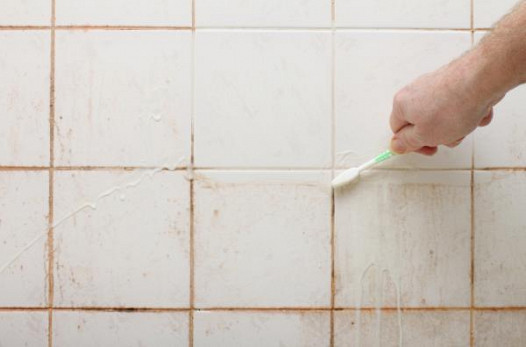How to Help Prevent Water Damage in Your Bathroom
How to Help Prevent Water Damage in Your Bathroom
Blog Article
Do you find yourself looking for information about How to Prevent Bathroom Water Damage?

The restroom is very susceptible for damp build-up as well as prospective water damages because of the regular use of water in it. This article offers simple inspection techniques to aid detecting water damages threats.
The constant use water in the washroom makes it very prone for wet build-up as well as prospective water damage. By inspecting it regularly, you can lower water relevant problems.
The complying with set of evaluations is easy to execute as well as ought to be done once in every three months in order to maintain your washroom in good shape and to stop possible water problems triggered by the bathtub, the shower, pipeline joints and also plumbing, sinks, cupboards, and the commode
Do not forget doing these evaluations and be detailed while doing them. Bear in mind that these simple examinations can conserve you a lot of cash by supplying very early signs for water damage
Bathtub and Shower
The shower and also tub need special focus and also upkeep. Check the tiles and also change if broken. Make sure that there is no missing out on grout in between the ceramic tiles. Examine and change split caulking at joints where the walls fulfill the flooring or the bathtub. Obstructed drains pipes and pipelines issues will prevent the bath tub from drying and also might indicate significant issues below the bath tub. Talk to a professional quickly to avoid structural damages. Take note of discolorations or soft locations around the bathtub wall surfaces as they may show an interior leakage.
Plumbing
Signs for water damages are hard to detect considering that the majority of pipes are mounted inside the walls.
Pay unique attention to floor covering as well as wall surfaces moisture and also stains as they might indicate an unseen plumbing issue. Examine wetness degrees in adjoining spaces as well.
Sinks as well as Cabinets
Sinks and cupboards are revealed to wetness and also humidity day-to-day and are commonly forgotten. Examine consistently under the sink as well as on the kitchen counter above it. Repair any kind of drip in the trap as it might recommend drain issues. Look around the sink, slow-moving draining pipes may show a blocked drain. Change sink seals if they are split or loose.
The Bathroom
The commode is a susceptible water joint. Examine the water lines and look for leakages around the toilet seat, in the hose pipe, and also under the water tank. If you spot any kind of indicators of moisture on the floor around the commode, look for leaks in the toilet rim and also container seals.
Be aware that hanging bathroom dish antiperspirants increases the possibilities for blockages.
Water Damage Signs In The Bathroom To Avoid Cleanup
Musty smell
This is one of the easiest signs to catch because musty smells are so odorous. The damp, earthy, moldy smell should be a big red flag. The smell will develop when moisture gets trapped in surfaces, and begins to facilitate mold growth. Leaking pipes under cabinets, inside walls, and behind shower fixtures will cause moisture to stay trapped and not dry, which will lead to mold growth and spread. As soon as you notice any musty smells in your bathroom, have it checked for hidden water damage and cleanup signs.
Visible mold
If the smell isn’t there to give it away, sometimes you will actually see mold growth. Finding mold in your bathroom is a serious problem, because mold is very harmful to your health. By the time mold growth is visible, it also means that water damage has already occurred and been present for some time. The only way the mold problem can be resolved is to find the source of the moisture and get it stopped. To safely and adequately remove mold, you need to have professionals handle the remediation. Do not waste any time in getting mold problems addressed, fixed, and sanitized so that you can protect you and your family from the many respiratory symptoms caused by mold exposure.
Damaged floors
Bathroom floors should be able to withstand some exposure to water while still remaining in good condition. However, when excess exposure or water leaks occur, they will begin to damage even the most water-resistant flooring. If you notice any cracking, bubbling, staining, or warping on your bathroom floors, there is probably a water leak somewhere causing the distortion. If you notice areas of the floor have become softer, or even have a spongy feeling, there is probably damage to the subfloor. Subflooring is typically made up of plywood. When plywood is exposed to water or moisture, it will absorb it. Once it has become saturated, the weight of the excess water will cause the wood to swell and soften. Check the floors in your bathroom frequently to catch any of these sings before they lead to damaged subflooring.
Changes on walls
When water leaks behind walls, it will cause changes in the drywall. Peeling plaster, blistering paint, and soggy wallpaper are all good indicators that excess water is building up behind the wall. Water leaking behind drywall will cause it to swell and be soft to the tough. If you start to notice gaps along the trim of your walls, or where tile meets the wall, it could also be a strong indicator that there is a leak behind the wall. Any changes, distortion, or damage on the walls should be evaluated as soon as you notice it to prevent further water damage and cleanup.

I recently found that blog post on Common Causes of Water Damage in a Bathroom when perusing the web. Enjoyed reading our entry? Please share it. Help others check it out. Many thanks for your time. Visit again soon.
Request Free Estimate Report this page